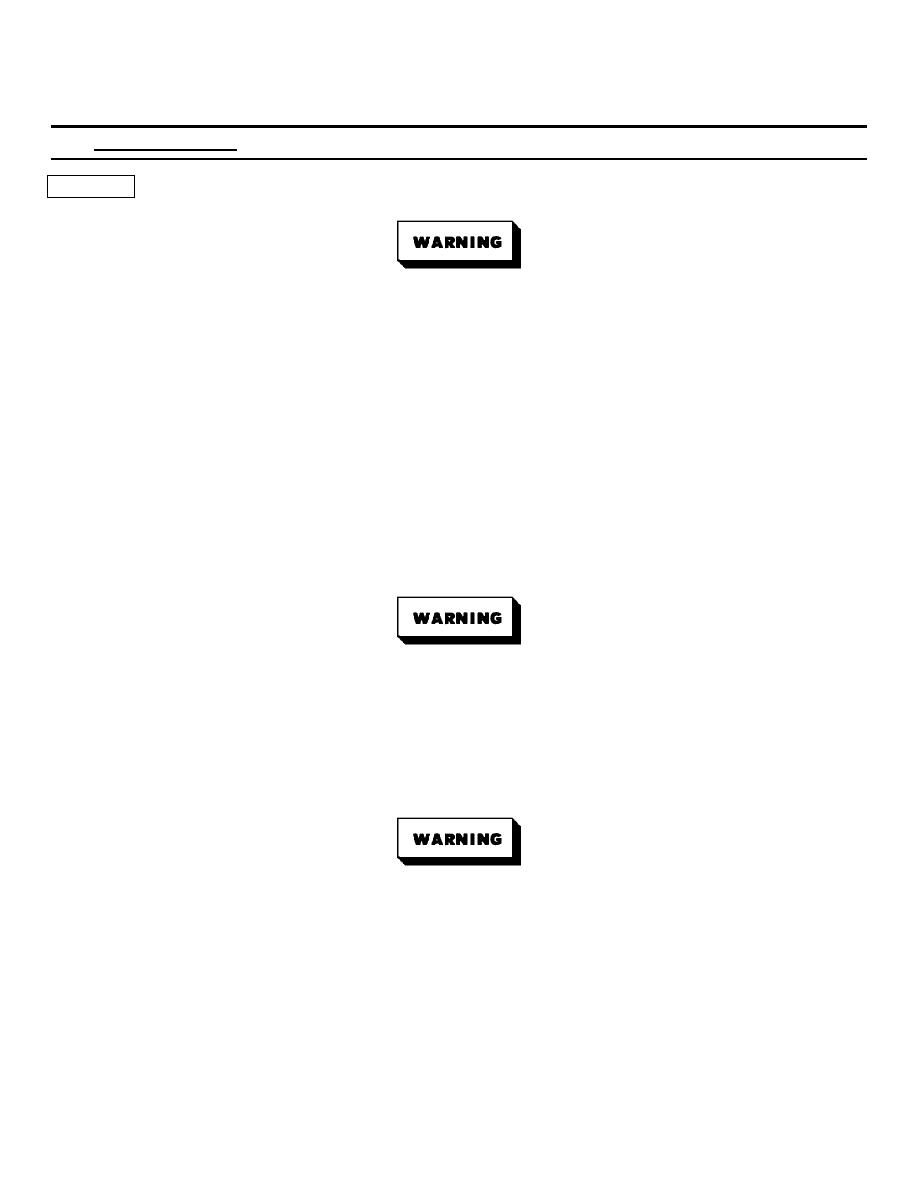
ARMY TM 9-4120-380-14
NAVY EE-000-BA-MMA-010 7053-AC
AIR FORCE TO 35E9-136-21
5.37 COMPRESSOR (B2). - Continued
REMOVAL - continued
Death or serious injury may result if personnel to observe safety precautions. Use great
care to avoid contact with liquid refrigerant or refrigerant gas being discharged under
pressure. Sudden and Irreversible tissue damage can result from freezing. Wear
thermal protective gloves and a face protector or goggles in any Situation where skin-
eye-contact is possible.
Prevent contact of refrigerant gas with flame or trot surfaces. Heat causes the
refrigerant to break down end form carbonyl chloride (phosgene), a highly poisonous and
corrosive gas.
d.
Slowly loosen high refrigerant pressure switch flarenut (13) and let gas escape.
e.
Slowly loosen low refrigerant pressure switch flarenut (5) and let gas escape.
f.
Remove high refrigerant pressure switch flarenut (13).
g.
Remove low refrigerant pressure switch flarenut (5).
When removing suction and discharge service valves avoid coming m contact with coil,
to avoid In jury to personnel and to reduce fin damage on the coil
h.
Remove suction service valve nut (2) (two 1-118 inch wrenches) and move valve away from compressor.
i.
Remove discharge service valve nut (18) and move valve away from compressor.
j.
Remove four bolts (7), locknuts (10), small washers (8), and large washers (9) from mounting bracket.
Compressor weighs approximately 100 lbs. Personnel injury and/or internal components
can be damaged if compressor falls off of mounting bracket and shims
k.
Pry compressor (11) up to break loose shock mounts (12)
l.
Remove compressor (11).
m.
Remove plastic gasket seal (21) on two large lines (16) and (1).
n.
Debraze tubing three places (1), (16), and (20) and note location of tubing (paragraph .
5-92

